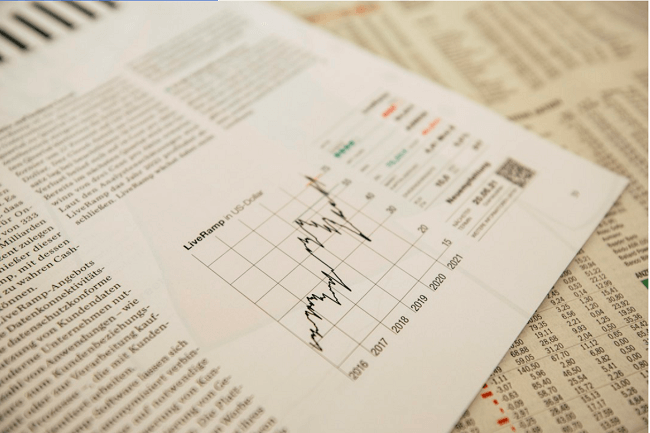Data analysis has become an indispensable tool for businesses to thrive in today’s fast-paced and data-driven world. With the amount of information available, businesses need to constantly measure and track their performance to make informed decisions. A critical component of this measurement is the visual representation of data, as it allows for easier interpretation and analysis.
One of the most practical and widely used tools for visualizing data is the line graph. Line graphs or line charts are powerful visual aids that present data points connected by lines, depicting trends and patterns over a period of time. This graphical representation makes it easier to understand complex data sets, enabling businesses to identify areas for improvement and make data-driven decisions. Keep reading to learn more about line charts.
Understanding the Basics of Line Charts
A line chart, also referred to as a line graph or line plot, is a straightforward yet powerful tool used to demonstrate a trend over time. Its simplicity and clarity offer strong visual impacts, making it one of the most commonly used chart types in many fields. The x-axis typically represents time, while the y-axis represents the measure of interest, such as sales, population, or temperature.
The basic structure of a line chart consists of multiple data points connected by straight lines. Each data point represents a specific value for a given period of time. By connecting these points, a line is formed, showing the progression of the measured variable over the chosen time period.
Line charts are incredibly versatile, allowing for the representation of various data types. They excel in presenting continuous data, which includes measurements taken at regular intervals or across a continuous time period. This makes them ideal for tracking changes over time and spotting trends. Additionally, line charts can be used to compare multiple data series on the same graph by using different colored lines or adding additional lines to represent different variables.
Types of Line Charts
While the basic structural foundation for all line charts is the same, variation exists due to the diversity of data being represented. There are three primary types of line charts: Simple Line Charts, Multiple Line Charts, and 3D Line Charts.
A Simple Line Chart is the fundamental type where a line is drawn from one data point to the next. Each point on the line corresponds to a value on the Y-axis, providing an easy way to estimate values for any given time. Multiple-Line Charts, on the other hand, are useful when you want to compare multiple datasets on the same graph. For instances where multiple variables change over time, this type of chart provides a more clear perspective.
Finally, 3D Line Charts add another dimension to standard Line Charts. They not only provide depth but also give the ability to compare different categories or series more effectively. While 3D Line Charts may seem more visually appealing, they could add confusion due to complexity and must be used appropriately.
Understanding these line chart varieties can help you select the optimal tool for your data visualization, thus adding clarity, precision, and depth to your analysis and interpretation.
Application of Line Charts

Line charts find applications in myriad fields due to their ability to display trends over time with simplicity and clarity. Be it weather forecasting, stock market analysis, performance tracking, health readings, or research, line charts serve critical roles in these sectors.
Weather forecasts often use line charts to represent temperature changes over a day or predictions for the week, making it easy for the public to understand the expected weather conditions. Stock market analysts and financial professionals often turn to line charts to evaluate company performance over time or against a benchmark. Whether it’s revenue growth, net profit margins, stock prices, or cash flow, line charts offer a lucid method to measure and monitor financial evolution.
Performance tracking, whether of an individual athlete, a team, or a business, can be effectively done using line charts, providing an easy-to-understand view of progress over time. Monitoring health progress, such as weight loss or blood sugar levels, can be accurately done using line charts.
In research, line charts are used to visualize experiment results or to track changes in variables over time. They provide an efficient way of communicating complex datasets, findings, and theories. Regardless of the field, line charts’ application only underscores their importance in today’s data-centered world.
Overall, the use of a line chart is a testament to the ever-increasing importance of data analysis in business. By turning raw figures into actionable insights, businesses can move away from intuition-based decision-making to a more precise, data-driven approach, leading to better performance and a competitive edge.

